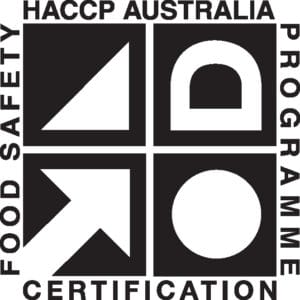Frequently Asked Questions
CUSTOMER SERVICE
What is the expected lead time for garment orders?
CRG holds limited garment inventory. If in stock, garment orders have an anticipated lead time of approximately 3 weeks.
If the manufacture of new garments is required, then there will be an anticipated lead time of approximately 14-16 weeks.
What is the expected lead time for products?
Purchase orders received before 3.30pm AEST (Monday to Friday) will be entered and processed within the same day.
- Stock items: If ordered before 3.30pm AEST, will be dispatched from our warehouse the next working day.
- Non-Stock items: For lead times of non-stock items, please contact CRG Customer Service.
What if I have forgotten my User ID or Password to access the Client Area Portal?
GARMENTS AND PROCESSING
What is the turnaround time for laundering garments?
Delivery (1-2 days)
- Garments are picked up from customer and delivered to CRG
Processing (3-5 days)
- Wash and dry garments using validated cycle
- Inspect, fold, pack and label garments
- Seal garments and sort for sterilising
Sterilisation (1-2 days)
- Sterilisation and aeration in validated cycles
- Approve steriliser cycle
- Aeration of sterilised garments
Dispatch (1-2 days)
- Dispatch garments to customer
The turnaround time for sterilised items is up to 11 days. All other items can take up to 9 days. Please allow extra time for transit if interstate.
If garments are purchased on a cost per use basis then sufficient garments would be allocated to each site to factor in turn-around time.
How do I return garments?
To arrange a courier to pick up garments and deliver them to CRG Melbourne for processing please contact Star Track Express to arrange your pick up.
How do I read a CRG delivery docket?
Why is the number of garments I received from CRG less than the number returned?
During the inspection process, there may be times where our cleanroom operators have identified a non-conformity. This often means a repair or a rewash is required. Any garments or items requiring a repair or a rewash are repaired and reprocessed as soon as possible and returned to the customer.
Your Delivery Docket should always reflect this adjustment.
If the physical quantity received is less than the quanity listed on the Delivery Docket please contact CRG Custome Service on 02 9281 4600 or service@cleanroom.com.au.
How do I calculate ideal stock in circulation?
To ensure continuity when garments are returned to CRG facility for cleaning, CRG supplies turn-around sets. For example if your facility requires 48 garments per week, CRG would supply 2 sets, plus 20% buffer. For metropolitan customers, if 48 garments required per week, 115 garments would be supplied in the initial installation for turning around.
Can you sterilise my garments?
Yes, we have sterilisation capabilities. At CRG we find that ETO is the best method for sterilising Polyester. Autoclaving causes these materials to shrink or melt, and gamma causes cross-linking in the polymers, leading to brittleness and reduced lifespan.
Sterilisation is done in-house and our method is revalidated annually using an ‘overkill’ method. It involves loading a steriliser chamber with garments, placing biological indicators in multiple locations (cold spots) and running a half length cycle.
The method is in accordance with the Australian Therapeutic Goods Administration (TGA) good manufacturing practices.
What is ETO sterilisation?
ETO sterilisation is carried out with ethylene oxide (ETO) gas. Gas sterilisation by ETO requires penetration of the chemical agent and also of water vapour, which is essential for biocidal action.
ETO is very diffusable, passing through many materials.
What if something breaks at your facility? Will my garments still be processed?
Yes, your garments will still be processed and done so on time because of our dual supplier policy. With at least one alternate supplier, we can ensure constant supply. This policy covers gas supplies, sterile bags and other high-demand and crucial items.
We also have a duplicated in-house system. Running a dual boiler in Melbourne ensures constant supply in the event of damage to one machine.
Our facilities also have dual sterilisers, stand-by washing machines and dryers, as well as dual air conditioners and chillers.
What if you run out of supply of something?
QUALITY
What kind of accreditation does CRG have?
- We maintain an admin and storage facility in Sydney and a processing facility in Melbourne. Both facilities have AS/NZS ISO 9001:2015 Quality Management Systems accreditation.
- All testing takes place in NATA accredited laboratories.
- All our garments are HACCP accredited.
Copies of our quality certificated can be downloaded below:
Do Ecolab disinfectants have an ARTG number?
How do I know my garments have been processed to a suitable standard for my cleanroom?
CRG carries out regular environmental testings and a Quarterly Environmental Testings Report is available on request. For details of our testings please go to the Quality Page.
Where would I obtain a CofI, CofA, CofS, or CofC for my products and garments?
Please go to the Client Login and follow the prompts.
Is CRG audited independently?
Yes, by customers and SAR Global for the Quality Certificates.
As customers/potential customers can we audit CRG?
Yes, you are welcome to arrange an audit with us.
Where can I get product specifications, MSDS’s and technical information?
Are validation reports available for the sterilisers and PCG process?
How do I interpret the colour indicators on sterilised items?
BEST PRACTICE
Why wear Cleanroom Garments?
The main purpose of cleanroom clothing is to contain the spread of particulate and microbial contaminants. Cleanroom clothing is generally designed to protect the environment and the product being manufactured (Packaging People to Protect Products).
However, on some occasions it is also necessary to protect the person from the product as well (Packaging People to Protect Products & People), such as when manufacturing potentially harmful drugs.
What would you suggest to be the recommended type of water to dilute concentrated biocides?
These products should be diluted with water of a suitable quality for a cleanroom environment. The water selection is generally one of the following:
De-ionised, Purified, Sterile, Water for Injection. Standard tap water is unlikely to be suitable for cleanroom use and not recommended.
Is the use of steam cleaners recommended as an alternative cleaning method rather than the use of disinfection solutions?
The use of steam cleaners is not recommend in a controlled cleanroom environment for the following reasons:
- Cleanrooms are controlled environments and the temperature and humidity are closely monitored and are set to defined parameters, these parameters help protect the quality of the product being manufactured. Any excursions outside these parameters results will result in a Deviation Report being raised and this could affect batch release. Using steam cleaners would almost certainly affect the temperature and humidity of a room.
- HVAC systems handling the air in the cleanrooms will not be able to cope with the additional temperature and humidity spikes caused by steam cleaning.
- Validation of the steam cleaning process will be difficult to validate and produce reproducible results.
- The steam cleaner its self could be a source of contamination.
- Operator acceptability can be issue
- Health and Safety issue working with hot steam.



